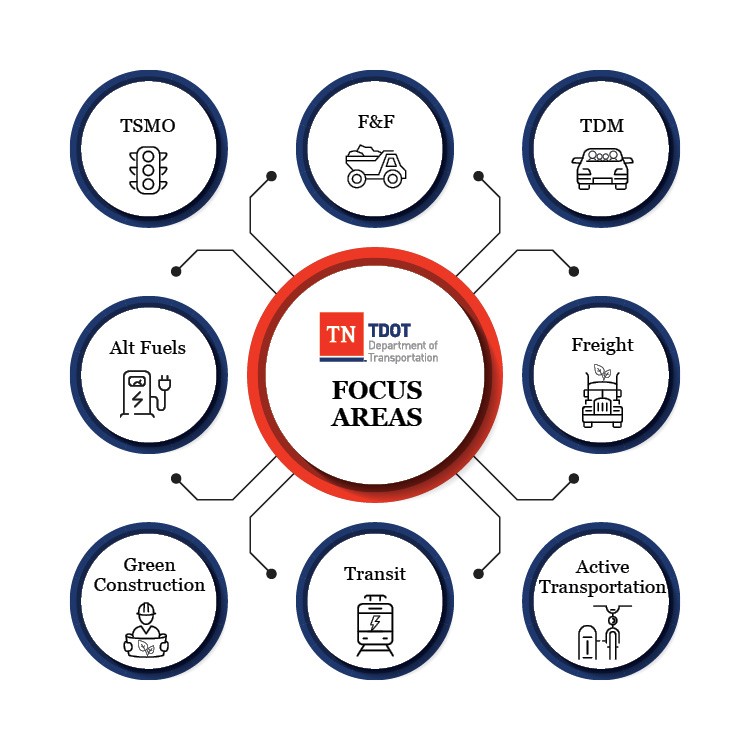Carbon Reduction Program

In 2019, the transportation sector is responsible for approximately 33 percent of total U.S. CO2 emissions[1], making it the largest contributor to these pollutants in the country. Investing in CO2 reduction strategies demonstrates our commitment to a cleaner, healthier, and safer environment for future generations. Tennessee cares about its environment.
[1] The U.S. National Blueprint for Transportation Decarbonization (energy.gov)

Total 2019 U.S. GHG emissions with transportation and mobile sources breakdown. Data derived from the EPA Inventory of U.S. Greenhouse Gas Emissions and Sinks. This Blueprint uses 2019 as a baseline since impacts due to COVID-19 complicate the use of later data.
The Carbon Reduction Program (CRP) is a new federal program created by the Bipartisan Infrastructure Law that will provide Tennessee $139 million over five years to fund projects that reduce carbon emissions from transportation. CRP funds are flexible and can be used on a variety of different projects - from installing infrastructure to support the electrification of freight vehicles, to constructing Bus Rapid Transit corridors, to on and off-road facilities that promote walking and biking.
The Carbon Reduction Program requires every state to develop a Carbon Reduction Strategy that identifies how funds will be distributed and allocated to projects and strategies that reduce emissions from transportation. The plan must include:
- Identified projects to reduce carbon emissions
- Strategies to reduce traffic congestion and facilitate alternative modes
- Policies and programs to encourage lower emissions modes of travel
- Approaches to lower emissions from construction of transportation assets
TDOT’s Carbon Reduction Strategy (CRS) will build on the projects and priorities in the State’s 25-Year Transportation Policy Plan, Tennessee’s foundation for prioritizing transportation investments across the State, and its Statewide Transportation Improvement Program (STIP). The Strategy was developed in consultation and coordination with the state MPOs and RPOs. The Strategy will be context sensitive and provide appropriate solutions considering the relative population densities across the State. TDOT submitted the Tennessee Carbon Reduction Strategy to the Federal Highway Administration for approval. Click the link below to access the approved CRS.

TDOT developed a Carbon Reduction Dashboard to convey how funds are allocated to different projects across the state. This digital tool can be used to see the types of projects and locations of projects that are being funded in Tennessee. The program dashboard will be updated with project data as it becomes available. Click the image to view the dashboard.
Project funds are provided to the states each year, and 65 percent of those funds must be distributed to the following urban and rural areas of the State, in proportion to their relative shares of the population in the State:
- Large urban areas with populations over 200,000
- Mid-sized urban areas with populations between 50,000 and 200,000
- Smaller urban areas with populations between 5,000 and 49,999
- Rural areas with a population of less than 5,000
The remaining 35 percent of funding can be spent on statewide per TDOT’s discretion, for carbon reduction projects.

TDOT carried out an engagement process to inform about the Carbon Reduction Strategy that began in the fall of 2022 and continued through the summer of 2023. The engagement plan included stakeholder surveys, a series of MPO and RPO meetings, peer DOT interviews, and consultation with a Project Advisory Committee (PAC). All input received was carefully considered while crafting the draft strategy and informing the project prioritization process.
